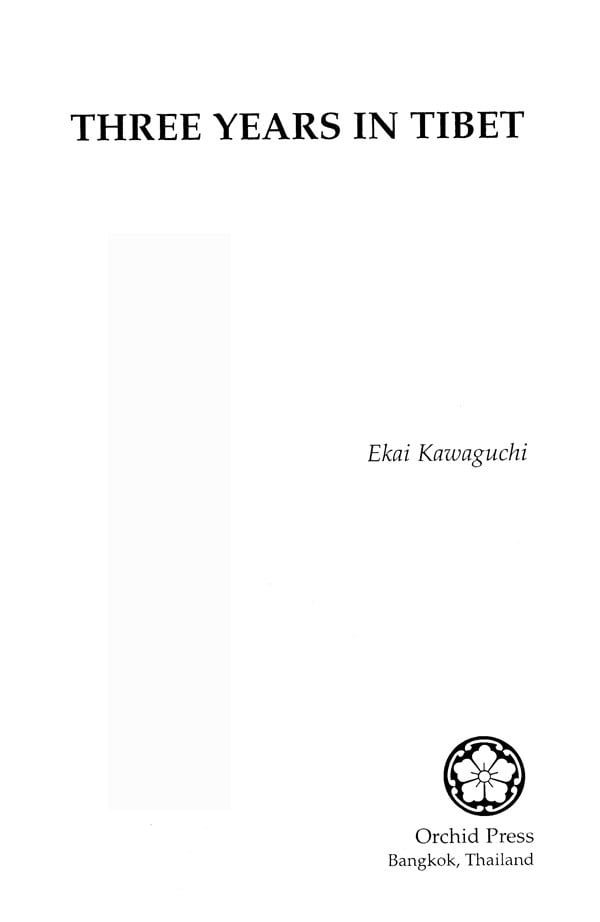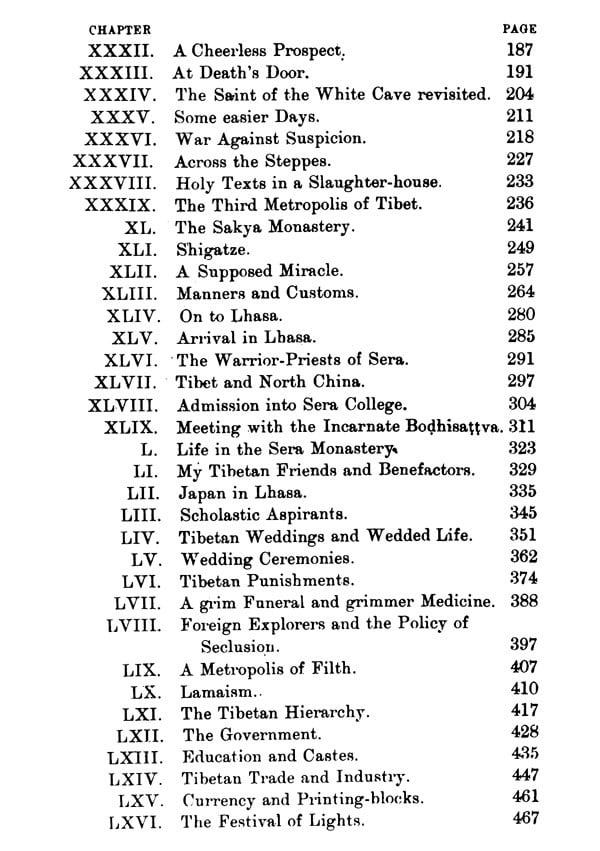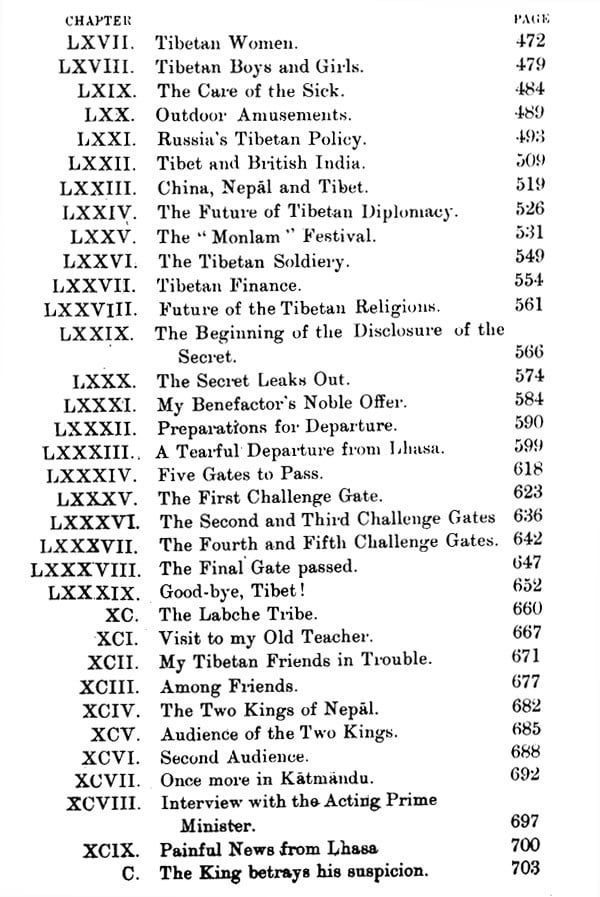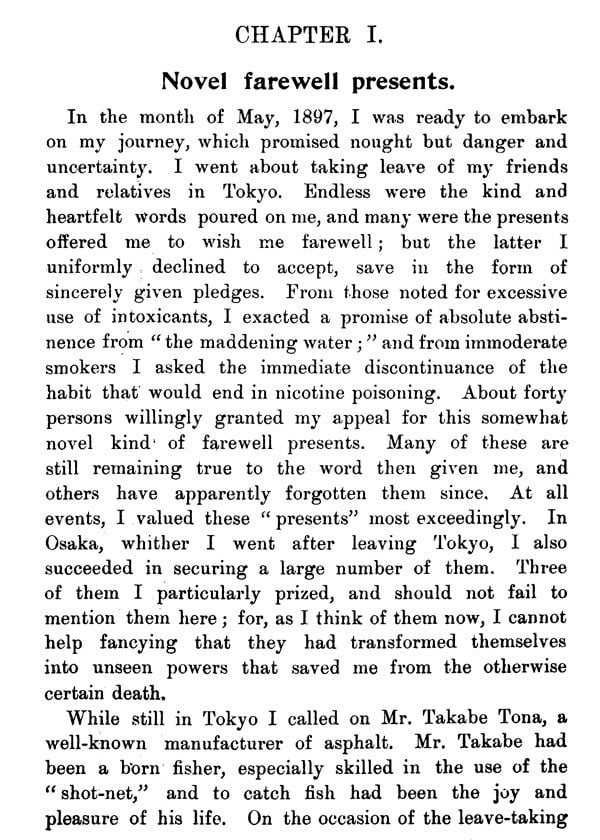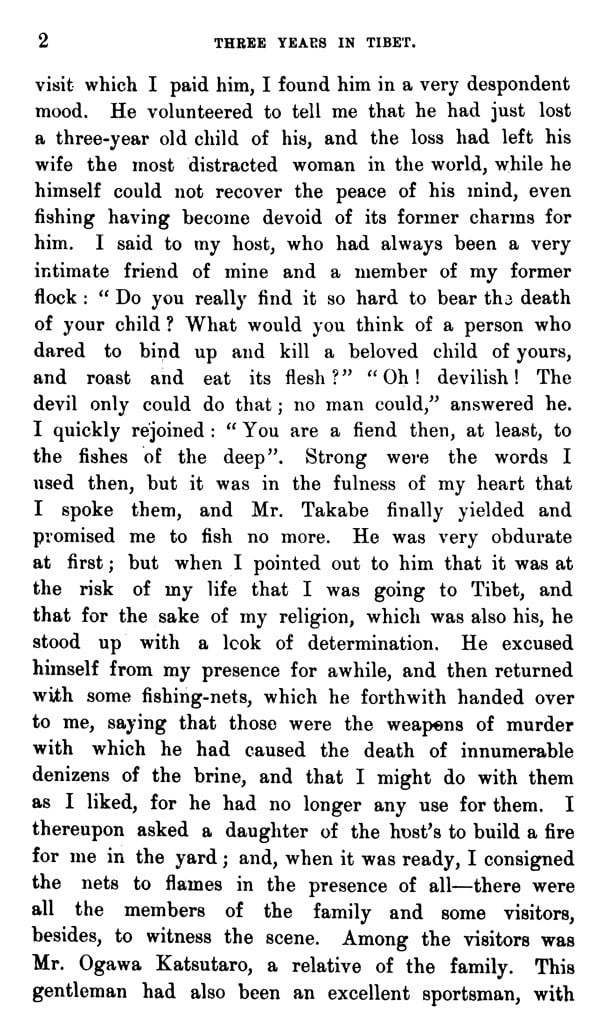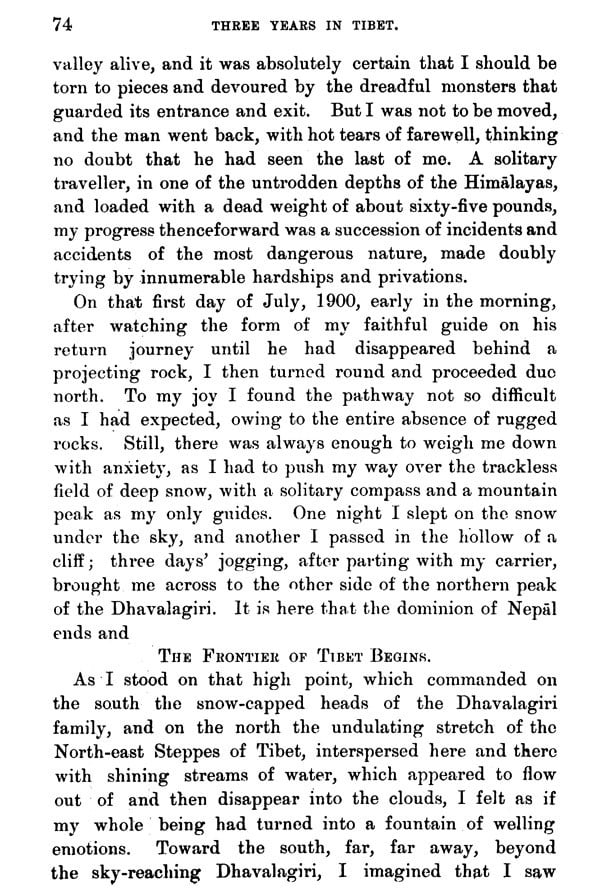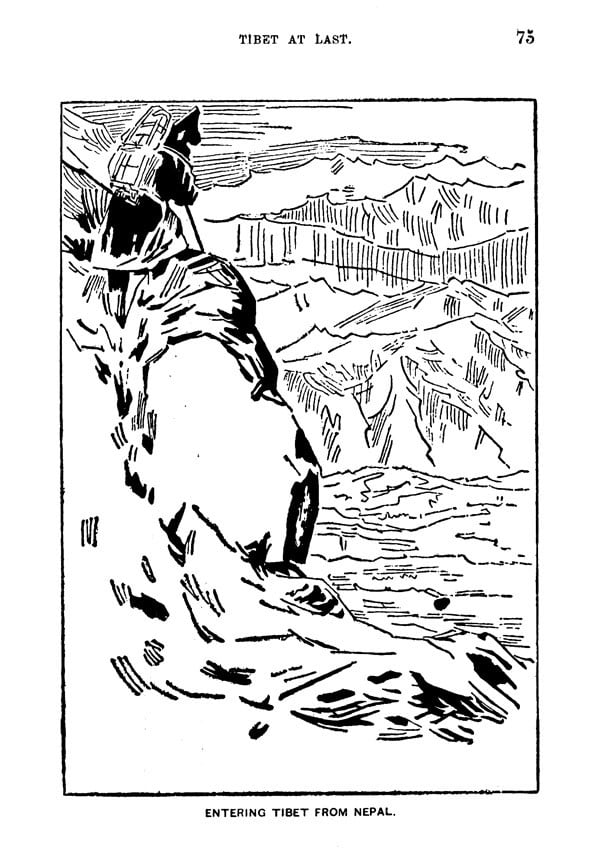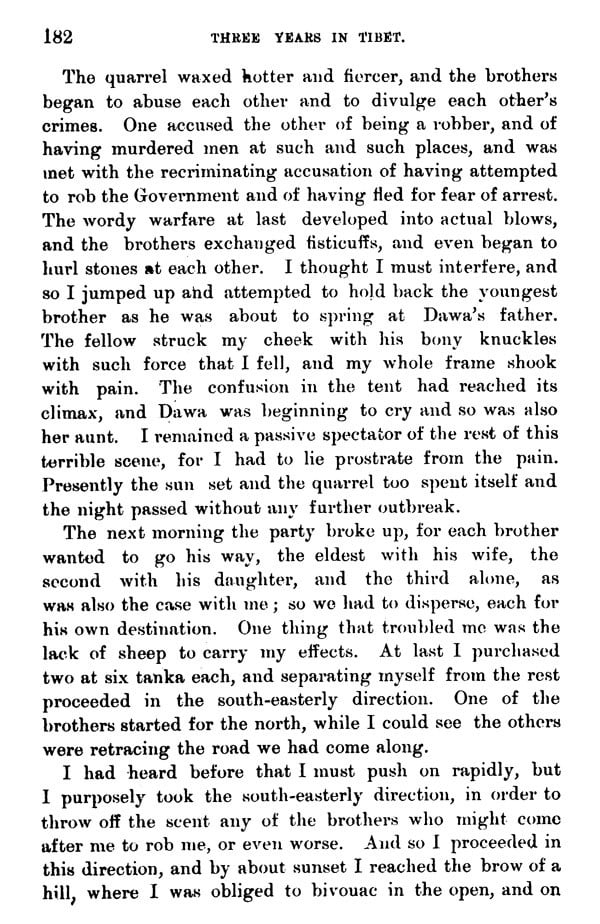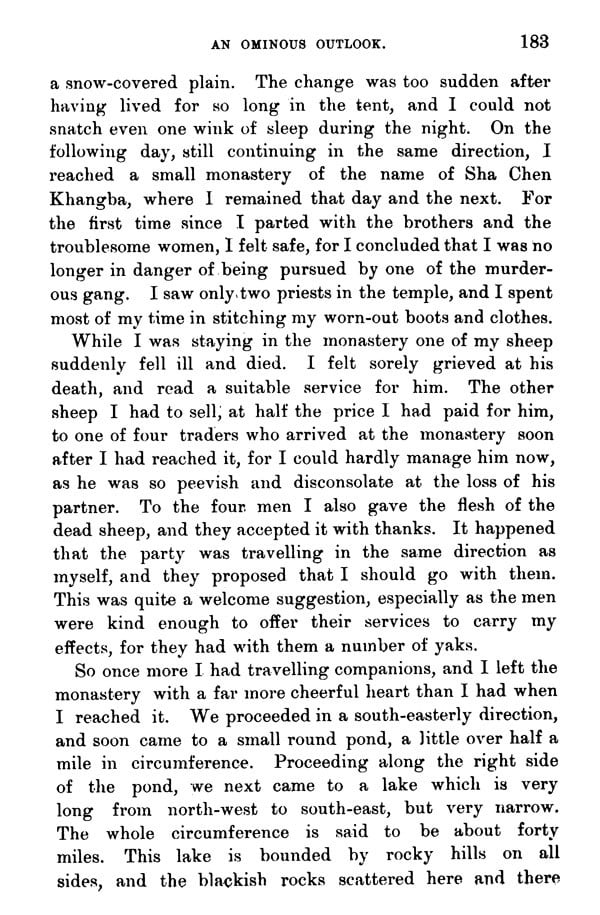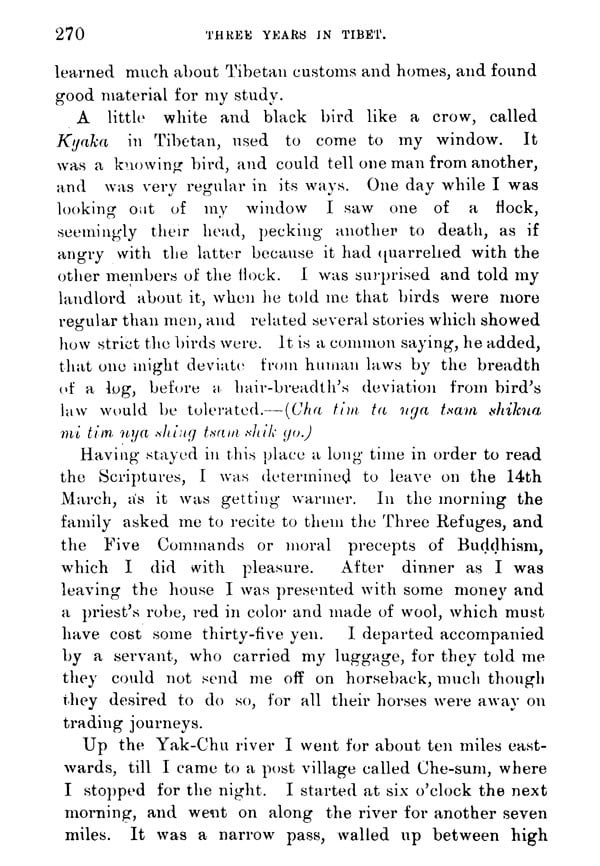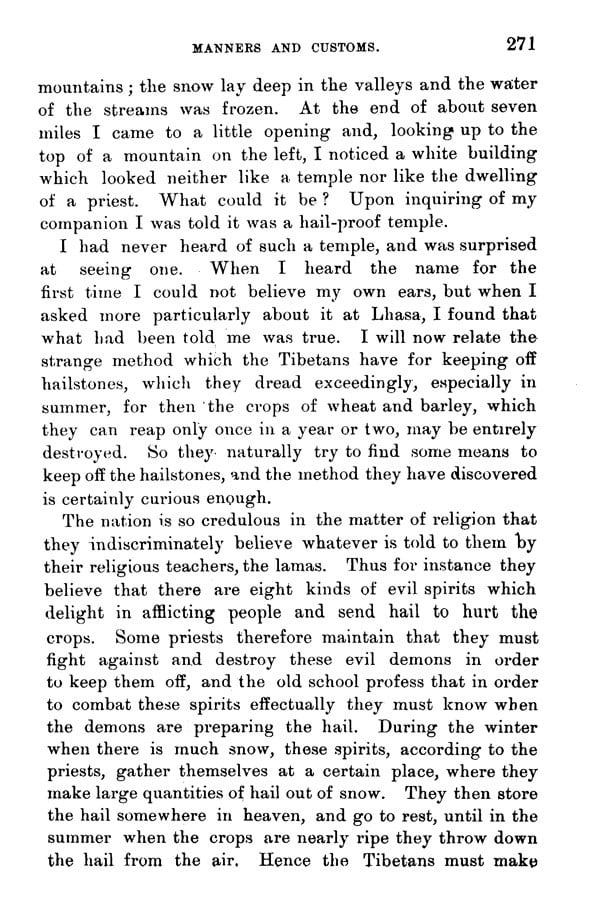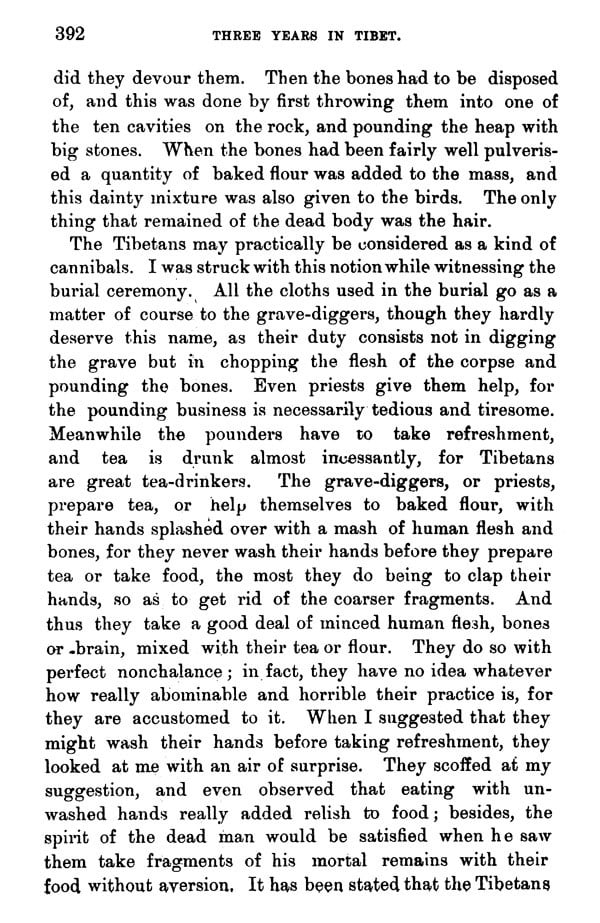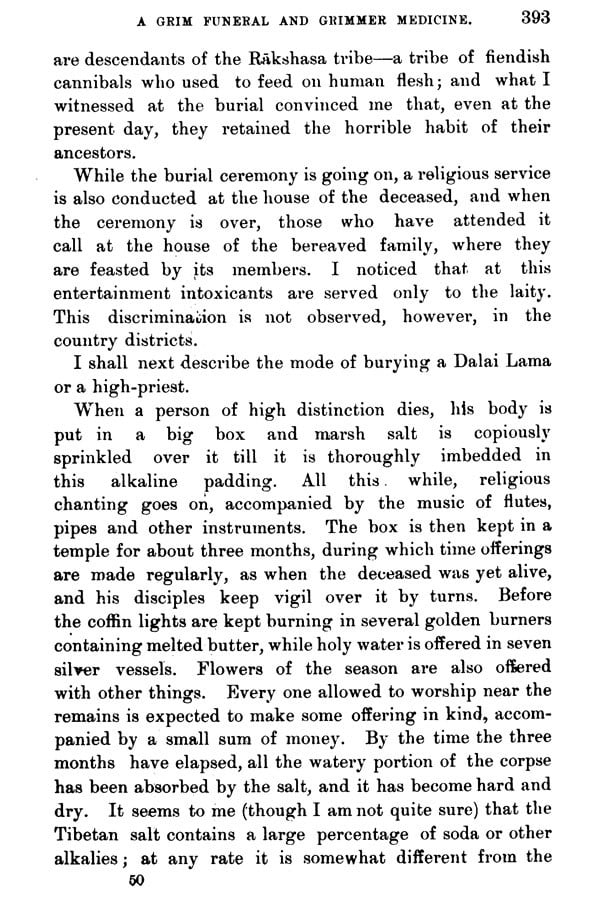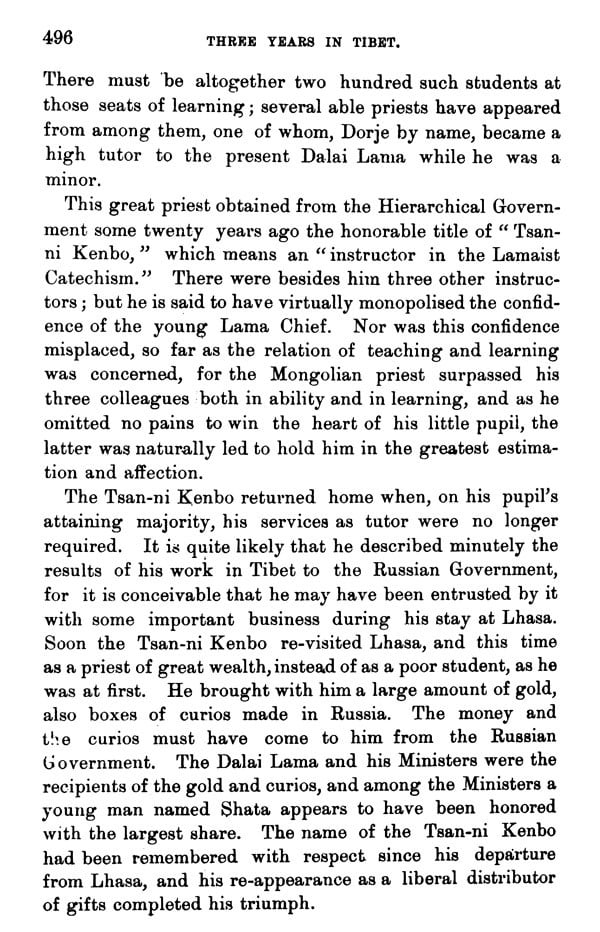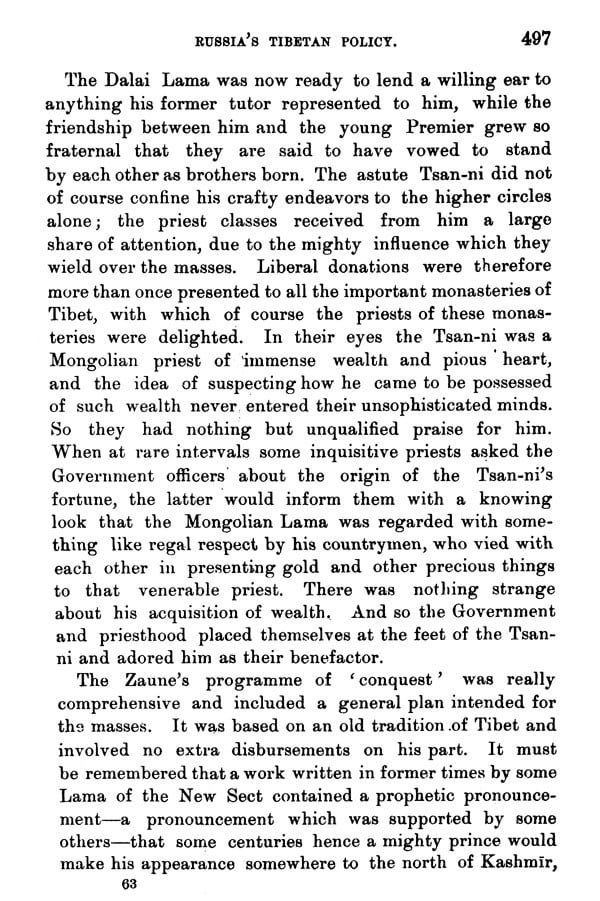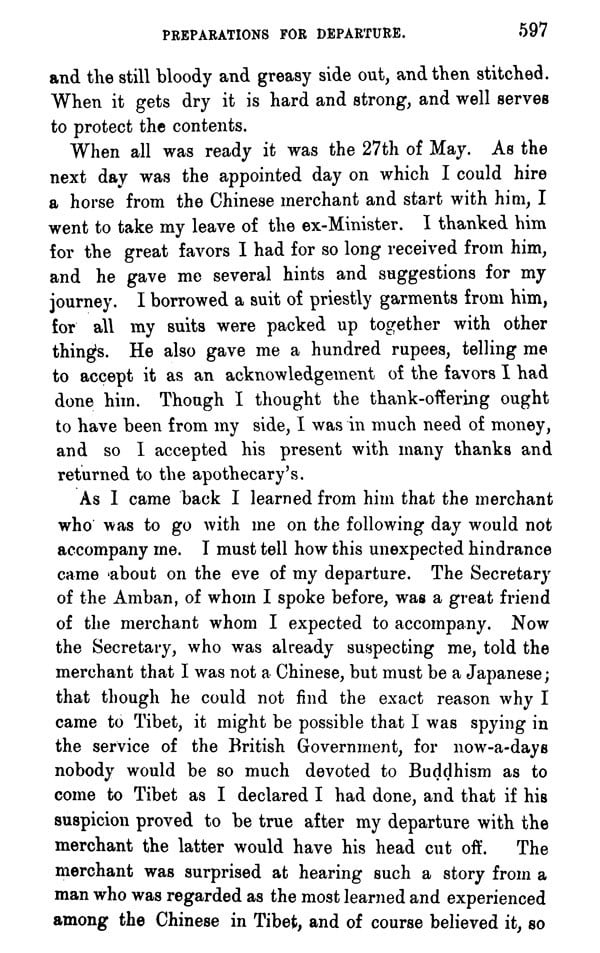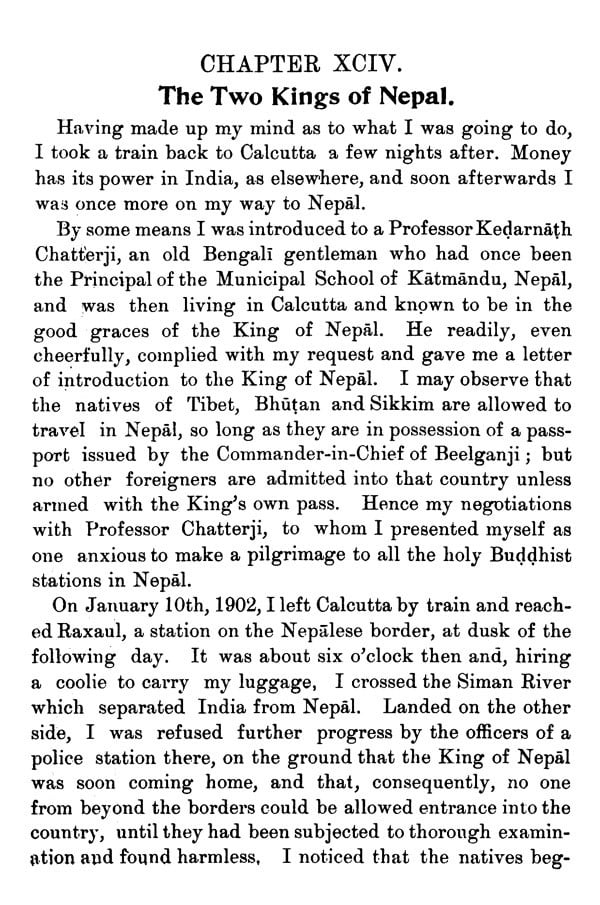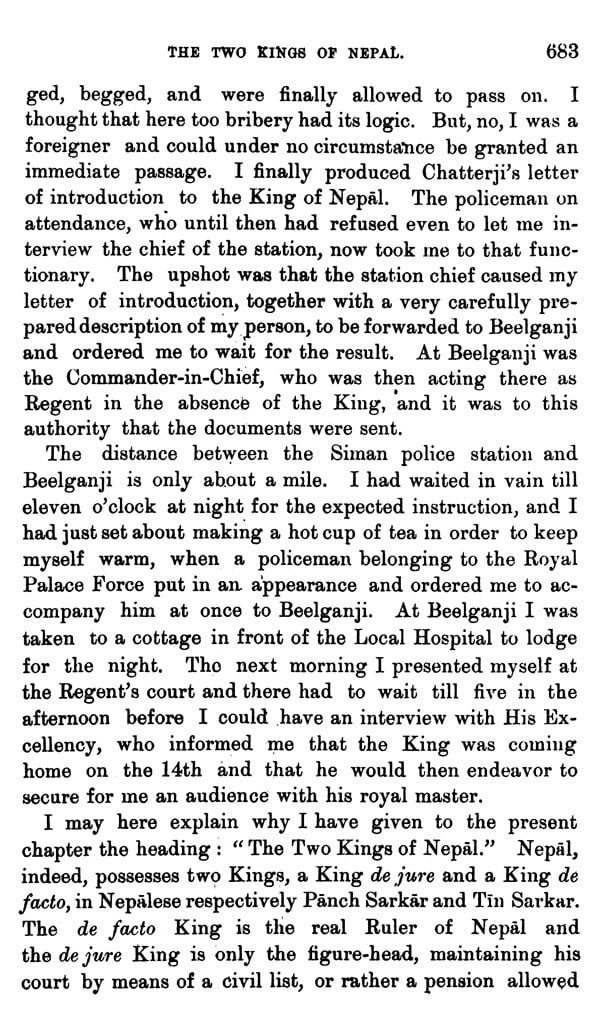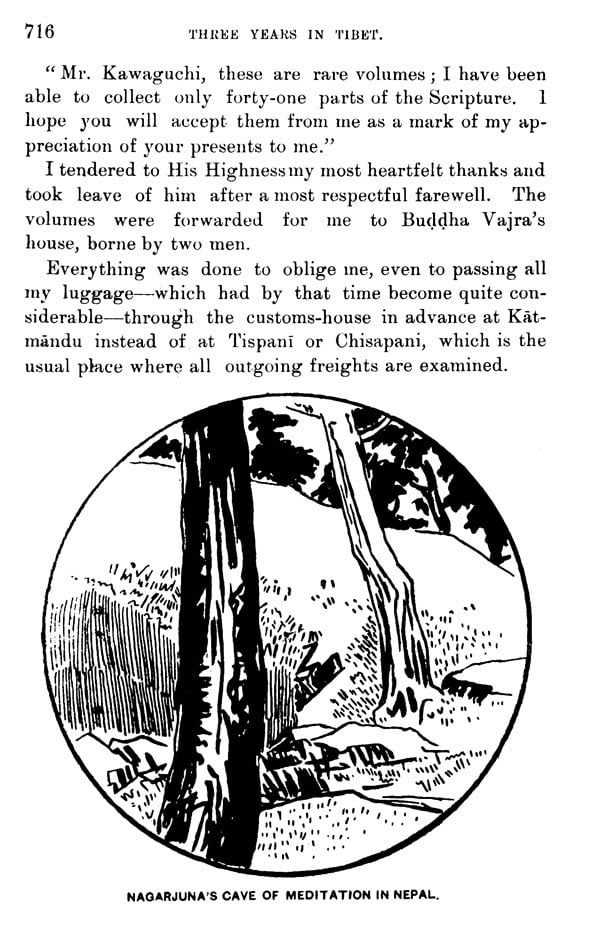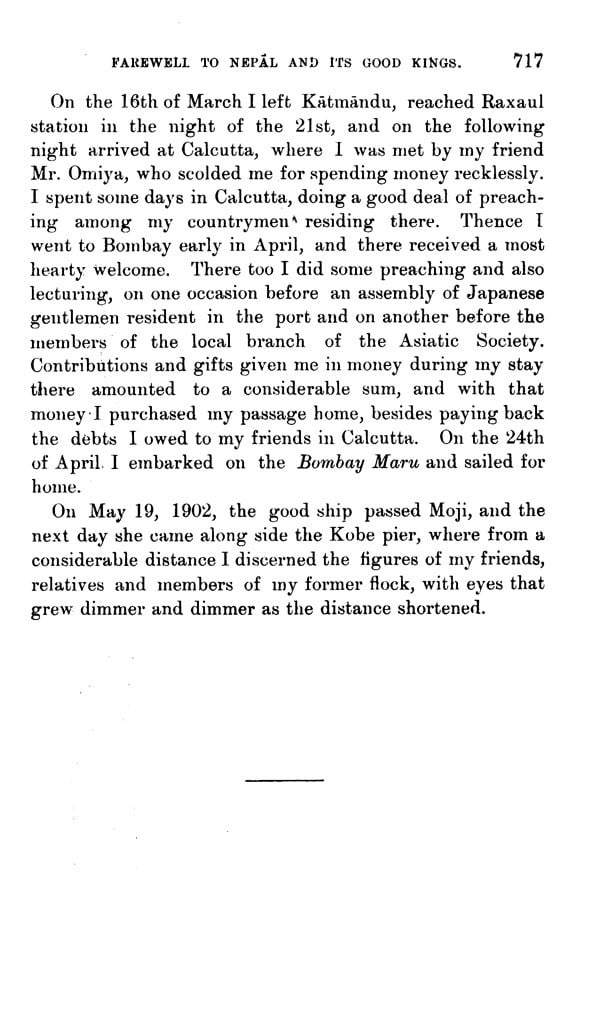
Three Years in Tibet- Bibliotheca Himalayica
Book Specification
| Item Code: | UAR868 |
| Author: | Ekai Kawaguchi |
| Publisher: | White Orchid Press |
| Language: | English |
| Edition: | 2005 |
| ISBN: | 9789745240148 |
| Pages: | 740 (Throughout B/w Illustrations) |
| Cover: | HARDCOVER |
| Other Details | 9.00 X 6.00 inch |
| Weight | 1.01 kg |
Book Description
It was in March, 1891, that I gave up the Rectorship of the Monastery of Gohyakurakan in Tokyo, and left for Kyoto, where I remained living as a hermit for about three years, totally absorbed in the study of a large collection of Buddhist books in the Chinese language. My object in doing so was to fulfil a long-felt desire to translate the texts into Japanese in an easy style from the difficult and unintelligible Chinese.
But I afterwards found that it was not a wise thing to rely upon the Chinese texts alone, without comparing them with Tibetan translations as well as with the original Samskrt texts which are contained in Mahayana Buddhism. The Buddhist Samskṛt texts were to be found in Tibet and Nepal. Of course, many of them had been discovered by European Orientalists in Nepal and a few in other parts of India and Japan. But those texts had not yet been found which included the most important manu scripts of which Buddhist scholars were in great want.
**Contents and Sample Pages**
